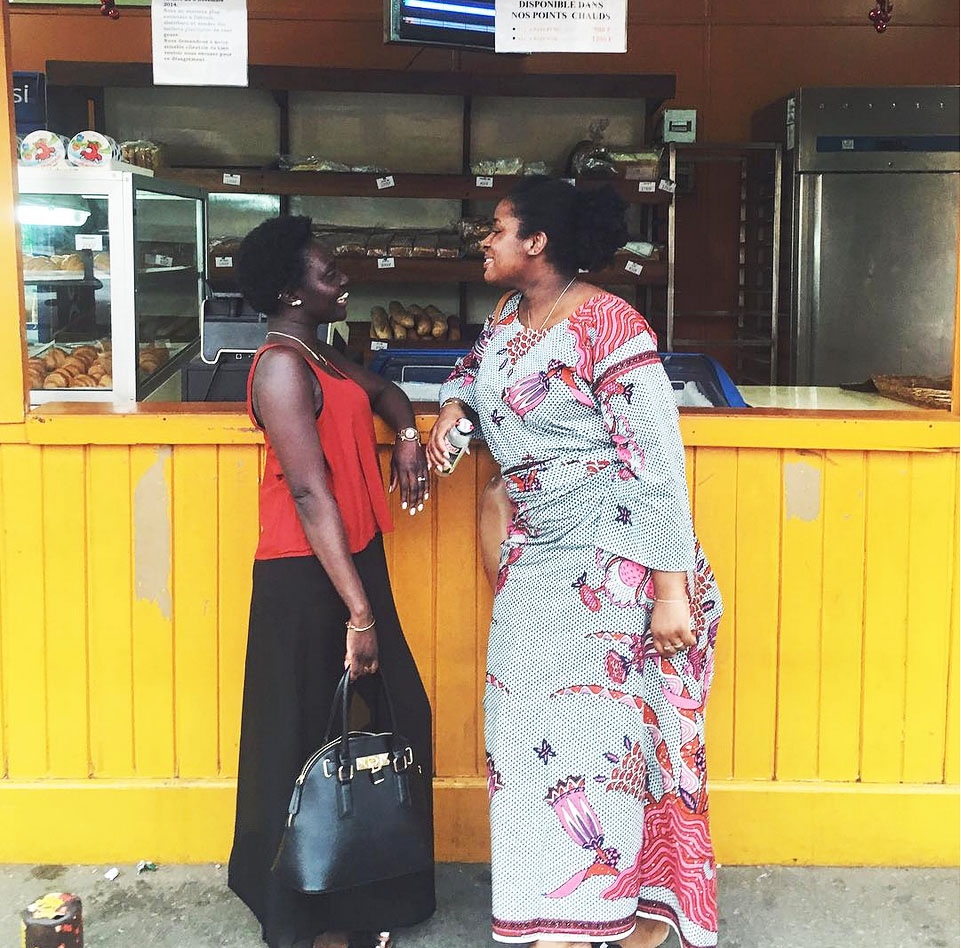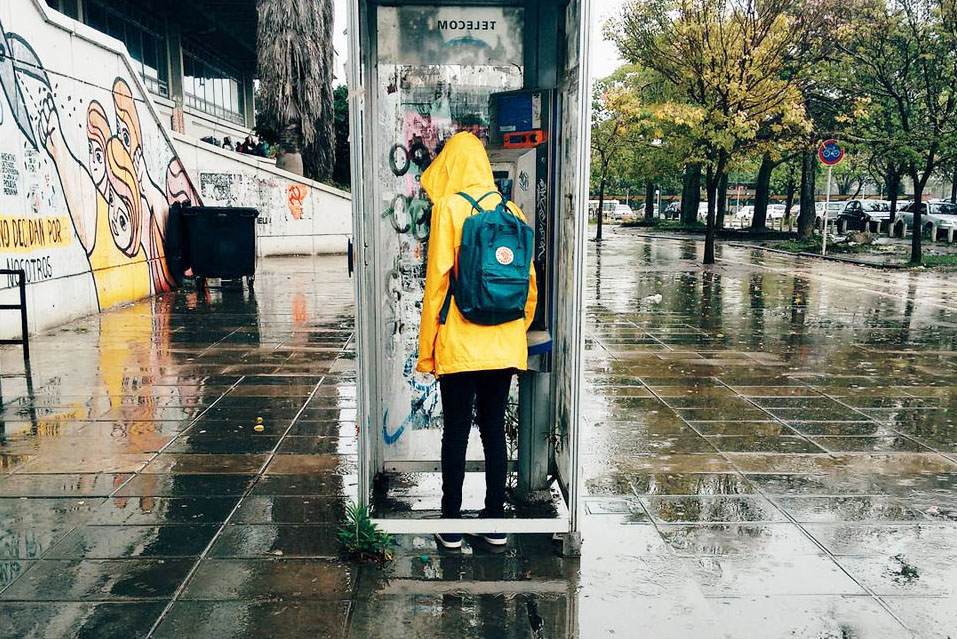The Instagram Book: Inside the Online Photography Revolution
Edited by Steve Crist and Megan Shoemaker | AMMO | $34.99
Life on Instagram 2017
Edited by Jim Stoddart | Particular Books | $49.99
Capture Your Style: Transform Your Instagram Photos, Showcase Your Life, and Build the Ultimate Platform
By Aimee Song | Abrams | $29.99
Vine, the video-sharing site owned by Twitter, has been used by many young people to document, often with comic effect, essential scenes of their daily lives. So when it announced that it was shutting down, those who think about such things began to worry that millions of six-second loops, a valuable resource covering a particular historical period – the second decade of the twenty-first century – would simply disappear.
There was no cause for alarm, the worriers were assured. The site would remain live and searchable, even while accepting no new posts. “Vine will always be Vine,” said a company representative. Not entirely convinced, various internet archiving sites are planning their own rescue missions, but they may yet prove unnecessary: there are reports that Vine may not be cryogenically frozen after all, but will find a buyer who will keep it both alive and active.
Other users and former users of Vine are more sanguine. Concerned less with history than with what will happen next, they see the likely demise of Vine as simply part of the organic, ever-morphing development of social media. Vine came, it flourished for a while, but it didn’t respond quickly enough to changing demands – for new functions, for opportunities to monetise – and so its time was up; other platforms, Instagram and Snapchat prominent among them, have taken the baton and are running with it. But neither Snapchat nor Instagram is running particularly hard in the archiving direction, the worriers might respond. Both of them – Snapchat as part of its core appeal, Instagram via a recent addition to its functionality – instead embrace the notion of disposability.
Snapchat has disappearance built in (although images can be retained and recovered if desired; disappearance is simply the default). Interestingly, this core function didn’t play well with focus groups in the early stages of development in 2011, but it quickly became the brand essence. Now Instagram, as of a few months ago, has introduced, Snapchat-like, a Story function that allows users to post a sequence of images or videos that automatically disappears after twenty-four hours (even though, once again, it is possible for users to retain their stories if they decide they can’t bear to let them go).
And so, even while museum workers and record keepers all over the world ponder what they should (and can afford to) preserve from the vast amount of social media activity and visual exchanges via the internet, the entire concept of the value of preservation is being bypassed, in favour of routinised disappearance. Or, to put it another way, we are told, sometimes reassuringly but more often with a hint of menace, that the internet never forgets. That may be so, but it does seem as if it is becoming increasingly and very deliberately absent-minded.

@caxmee, from Life on Instagram 2017.
Instagram, perhaps more than any other comparable platform, raises the question of what constitutes the life of the image. The answer, in theory, and as long as a “disappear” button hasn’t been switched on, is forever, but as every photographer and image-maker knows, it doesn’t mean much to say that your image is discoverable and viewable if nobody is discovering and viewing it. Unless an image is tagged, found, liked, re-posted, recommended and otherwise picked out from the crowd – according to latest estimates, Instagram has 500 million active monthly users, with over ninety million photos and videos being shared each day – then the life of the image is not much of a life.
Instagram started its own life in 2010, when it presented itself as a way of displaying the moments between the moments – not the “decisive moments” so closely associated with SLR and other forms of pre-digital photography, but spontaneous, catch-the-moment photography, supercharged snapshots taken with a smartphone that individually or in short sequences or “grids” imply a story, offering a closer connection with life as it is lived. A lot has changed since 2010, and the aura of spontaneity that still surrounds Instagram (post an image, wait a while to see who likes it, post another one), its dual emphasis on both recording and moving right along, has come to seem much more complicated, not least because, as is the case with every form of creative endeavour, achieving the effect of spontaneity can be hard work.
In 2014 (or, in social media terms, generations ago), Steve Crist and Megan Shoemaker’s The Instagram Book: Inside the Photography Revolution sought to capture, using selected images from the work of selected Instagrammers, what it was about mobile photography, and the platform provided by Instagram, “that was pushing photography forward into a new era.” But, as The Instagram Book demonstrates, this is far more easily said than done. “We selected,” say the editors, “a small cross section of photographers who reflect the spontaneity, joy, playfulness, poetry and beauty that we feel are so prevalent in the photographic world that is Instagram.” This attempt at definition, in both its generality and tentativeness, reflects the difficulty, not just for Crist and Shoemaker but for all observers of and participants in the photography revolution, in defining just what about it is so revolutionary.
The photographers included in The Instagram Book are each given a chance of their own, in a paragraph or two, to define the revolution, and their responses are for the most part astute and revealing. Despite the frequent use of the word “memory,” and the instances of the now widespread habit of referring to images themselves as “memories,” few of the sixty or so Instagrammers describe the actual images – the ones they themselves have taken in the near or distant past – as repositories of or stimulants to their own memories.
The Russian photographer Zhenya Aerohockey (@aerohockey), who has a definite talent for capturing the geometrical shapes and patterns of architecture, describes the value of being “able to look at a picture taken ten years ago and remember.” But he is an exception. Much more often, the capacity to stimulate and preserve memory is vested not so much in the images as in the process of photography itself. For anyone who questions the value of habitually taking photos of what you have for dinner, for instance, these attempts by Instagrammers to explain their “addiction” offer another side to the story.
In essence, mobile photography – smartphone in the hand, ever at the ready – offers a way of seeing, a defining frame around everyday experiences. Approached from this perspective, critics who berate the Instagrammers for substituting photographs for real life, for opting for the image in preference to the reality, miss the point. Mobile photography is life: for those who willingly succumb to its embrace, mobile photography provides a way of mediating, understanding and getting the most out of the world. In The Instagram Book, Yoshito Hasaka (@_f7) refers charmingly to the “happiness” that mobile photography brings him. The act of photography allows him to look at his home city of Tokyo with new eyes. “Every day and night, I shoot ordinary Tokyo scenes as if I’m travelling the world.”
The Instagram habit leaves little time for ferreting about in the archive. On the contrary, it is striking how often the focus of these photographers is on the future rather than on the past, and on the way that photography helps them to go forward and to make sense of what they are seeing along the way. Just as the grid function of the iPhone camera helps the photographer to balance and level the image and to highlight the interconnections of the objects within the frame, so mobile photography itself can provide a sense of the structure and order that underpins the apparently random, ordinary event.
Two years on from The Instagram Book, and the tone of Instagram has changed somewhat. Though you might not necessarily think so from Life on Instagram 2017, edited by Penguin art director Jim Stoddart and intended as the first in a series of Life on Instagram annuals. In his foreword, Stoddart defines the Instagram phenomenon, and by extension mobile photography in general, as being “about you and me recording the spectacle and nuance of our own lives and imparting our experiences, joys and sometimes our sorrows as they happen.”
Instagram is about spontaneity, about living in and simultaneously catching the moment, says Stoddart. It is an essentially democratic phenomenon, open to anyone with a smartphone and a willingness to master how the phone’s camera and the Instagram platform work. “Even when taken by experienced photographers,” he writes, “these are images that anyone could potentially capture, in the right circumstances on the right day.” Instagram images need to have that slightly serendipitous look, which is why loading images via smartphone that have actually been taken with DSLR or other kinds of cameras is not seen, by the strict adherents anyway, as quite playing the game.
What, then, is the role of chance, both in the creation of the stand-out image (“that anyone could potentially capture”) and in the selection of that image and the image-maker for inclusion in Life on Instagram, or on any of the vast number of “best of Instagram” lists that can be found online? As Stoddart acknowledges, curatorial comprehensiveness is an impossible ideal. You simply cannot look at everything. “There are so many million images uploaded every day that there is no way to see – let alone appreciate – all the content on Instagram (though we did try).” Any selection of these images can’t claim to be much more than an indication of what is good or quirky or interesting online, an encouragement to explore further and to make your own curatorial selections – which means, in effect, choosing who to follow.

@piergiuliocaivano, from Life on Instagram 2017.
Life on Instagram captures something of the experience of exploring the site online by presenting its curated images both as single pages and in Instagram’s characteristic grid pattern, which encourages the viewer to detect a theme or a narrative. It also acknowledges the repetitive nature of Instagram, by including several examples of popular subjects – not just the familiar tropes of sunsets and cats and doors, but also people jumping into water, or lone figures caught against a background of looming man-made structures.
One of the main criticisms of mobile photography is that these same kinds of subjects recur and recur, yet it is difficult to see why this should create any more of a problem than the sameness of Russian icons or Aubusson rugs. The pleasure for the viewer lies in detecting what might be especially skilful or fortuitous about a particular take on a familiar subject, and the more icons or rugs or photos of doors that you see, the more adept you become at spotting the ones that stand out from the others.
Though Life on Instagram emphasises the platform’s essential and continuing quality of spontaneity, in practice Instagramming is more and more a deliberate and calculating art, at least if your aim is to get as many people as possible to like what you post. Editing tools are packed with options for giving your images and grids a particular feel and style, and the photographer’s own selective eye is applied to the camera roll in the same way as a pre-digital photographer would pore over a contact sheet with a magnifying glass.
Rather than posting unthinkingly all the shots of the day, there is increasing emphasis on curating in advance, thinking ahead as to what the overall impact of the feed will be and how as many viewers as possible will be drawn to it. To say nothing of hash-tagging, which qualifies as an art in itself. In photography as in other art forms, self-curating is the new creativity, more creative even than the making and the editing of the photograph itself, activities that have become increasingly foolproofed by technology.
But curation, of your own or somebody else’s work, may already, like editing, be in the process of surrendering its quirkily human touch to technology. The company EyeEm, for instance, offers photographers the opportunity to monetise their passion, licensing photographs “from a community of eighteen million creatives, curated by artificial intelligence.” The system of “aesthetic ranking” developed by EyeEm holds out the possibility of being able to sort and rank unimaginably large numbers of images, many more than could be assessed by the human eye. (If you’re aiming for a high aesthetic ranking under this system, the human figure is good, and water, particularly if it is blue, is good too, making all those images of people jumping into water an instinctively smart choice.)
EyeEm technology lies at the heart of the recently launched app The Roll – “find your best photos,” runs the tagline, and all with the assistance of AI. “Trained using millions of curated photos, EyeEm Vision learns and replicates the choices of professional curators and applies scores to photos from 0 to 100.” For now, The Roll concedes final choice to the human eye. It identifies your best shots, after which the individual image-maker, according to personal “aesthetic taste,” chooses the best of the best. But it is surely only a matter of time before that clunky second step is eliminated, and the technology takes over altogether.
If the editing and curating of images are increasingly guided by technological applications rather than by the eye of the individual, what happens to the part played by human creativity in the making of the image? The gloomy view is that it will gradually succumb completely to the authority of the machine, but that doesn’t account for the extraordinary adaptability of photographers and their ability to stay on top of their apps. Far more likely than the gloom scenario is one where innovations like automatic aesthetic ranking will join the growing repertoire of tools to be cleverly managed, manipulated and exploited by individual photographers keen to make their marks.
The stylist and Instagram star Aimee Song (@songofstyle) – who has an impressive 4.1 million followers – offers a surprisingly engaging take on how this can be done, in Capture Your Style. The key, according to Song, is to understand the self-contradictory nature of Instagram. It is, she says, “both organic and curated at the same time. While I always try to show real, inspiring moments throughout my daily life, I want to capture them in the best possible way, which means thinking about what I am putting out there and planning in advance.”

@songofstyle (Aimee Song), from Capture Your Style.
Song has thousands of images on her feed, but in a sense the old ones have already half-disappeared into the little-visited world of the archive. Song’s focus is relentlessly and cheerfully on the future, on what images she will make and post in order to continue consolidating her brand, her way of life, and not least her commercial success. With her instinct for tightly controlled variation (one photo in twelve should be a selfie, she advises, certainly no more and ideally no less), Song is full of tips on how to document “your incredibly cool life” by controlling the technology rather than allowing it to make every choice for you. Not all mobile photographers want to have four million followers, or turn themselves into a brand, or keep constant tabs on their selfie ratio, but they might still want to emulate something of Song’s determination to stay in charge of their chosen medium.
What is still hard to gauge about mobile photography is the full significance of the ways in which it differs from “old” photography and old ways of distributing images. Mobile photography is not just another way of making a photographic image – it is a whole other way of thinking about photographs and the role they play in our lives. We persist in referring to photographs as “memories,” even as we forget them in droves. In fact, Snapchat recently introduced a category called Memories, meaning essentially photos you can keep, and iOS 10’s revamped photo app has a Memories tab, which will automatically generate a slideshow movie of photos it selects from categories like Events or Locations. There is something of the rearguard action about all this, rather like the parallel fashion for retro photography, which has emerged in response to everything rushing so determinedly forward.
If mobile photographs are indeed analogues or reminders of our memories, then we are remarkably casual about them, carelessly letting them disappear into fathomless archives or off the grid altogether. With so many posts on Instagram and elsewhere, it remains relatively rare for an image, created under online rules for an online world, to be given an “old-style” home, to be extracted from its natural, online setting and hung, Cartier-Bresson-like, on a gallery wall or published in book form.
But whatever the ultimate fate of the individual online image, mobile photography continues to offer a way of seeing and understanding the world that for its many practitioners is immensely satisfying and rewarding. To carry a camera-phone at all times is to be ever on the alert, capturing images that will help you understand and learn from today’s experiences and anticipate tomorrow’s. But as for yesterday’s? Well, no, not really, not least because when there is so much in front of the camera to photograph, there just isn’t a lot of time left for looking back. •




